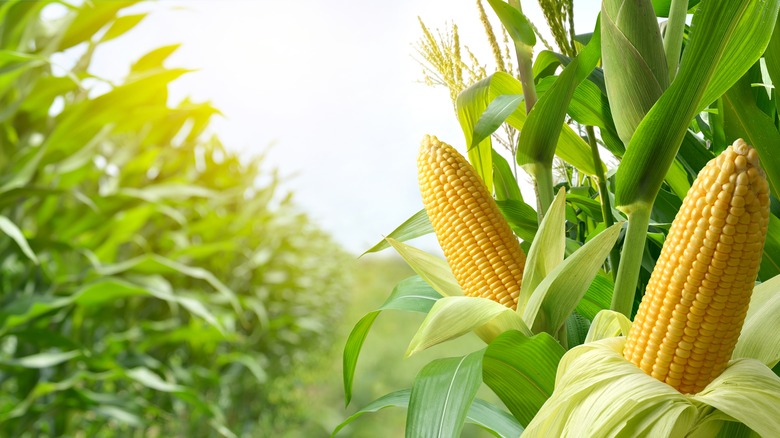What Is Potato Vodka And What Makes It Different From Standard?
Long considered a clear and flavorless spirit, at least by American definitions, vodka maintained that reputation until recent years. Until 2020, the Alcohol and Tobacco Tax and Trade Bureau (TTB) actually specified that any alcohol labeled as vodka must be void of any distinction, including character, aroma, taste, and, of course, color. While those strict equalizing standards have been relaxed a bit, seasoned vodka devotees were ahead of the curve, already rejecting the notion of tastelessness by noting overall differences in smoothness, mouth feel, flavor, and quality.
Whether slight or significant, the defining characteristics of vodka rarely come from added ingredients. Instead, the differentiating traits arise from the core distilling method –– in a nutshell, what the vodka is made from — specifically, whether it's distilled with potatoes or with grains such as barley, wheat, and rye. Rather than the more neutral taste of grain-based vodkas, ones made from potatoes get praise for deeper flavor complexity with a creamy, full mouthfeel. Grain distillation, by comparison, creates a cleaner, more neutral taste that's influenced by the type of grain. Additional variations in potato and grain vodkas depend on the types of potatoes and how many times the spirits go through the distillation process.
Potatoes provide earthy flavor to vodka
Potato vodkas typically go through fewer distillations than their grainy counterparts, meaning they keep more of the earthy elements that otherwise get filtered out. That directly affects the taste, which some describe as harboring slight vegetable notes. The type of potato matters as well, with distillers often choosing small potatoes with more concentrated starch and less water than larger ones. It also helps to use thin-skinned spuds that are easier to peel before fermentation.
A starchy potato such as Stobrawa aids in fermentation and is commonly used in countries like Poland, which has a comparatively high output of potato vodkas. Only about 3% of vodkas in production today come from potatoes — though the craft liquor trend in America is slowly embracing the standalone character of these vodkas. Distillers like Blue Ice headquarter in Idaho — the country's most prolific potato producer — sourcing the Russet Burbank variety for its handmade potato vodka. Chuckanut Bay Distillery in Washington State utilizes local Skagit Valley Yukon Golds.
The two other primary ingredients in both potato and grain vodkas are simply yeast and water, with high-quality distillers sourcing spring, glacial, or otherwise filtered water for clean, bright finishes. The extra distillations in grain vodka production aim to enhance this attribute, creating the neutrality preferred for many popular cocktails. Since potato vodkas have more flavor and depth, they're a good choice for drinking neat or over ice. Unsurprisingly, potato vodkas also pair well with savory bites like borscht.
More vodka types than just potato and grain
Pretty much anything that can be fermented, namely produce with enough starch and sugar, is fair game for experimental vodka distillers. That doesn't mean it's going to taste good, though. Proven crops for tasty vodkas — apart from potatoes and the standard grains — are corn, grapes, sugar beets, sorghum, and rice. But some have had success, depending on perspective and tastebuds, using fruits and even simple sugars.
Corn in particular is favored for its regional availability in U.S. states such as Texas, home to Tito's Handmade Vodka. Like potatoes, corn is naturally gluten-free, even before the multiple distillations that typically remove gluten from other grain-based vodkas.
Though vodka purists may stand by the nothing-added mantra, both potato and grain vodkas do come in flavored versions. Producers who yield to demand for more nuanced vodka taste profiles, such as sweet or fruity, can either steep the finished spirits with desired flavors or add them in the production process. Countries in the proverbial Vodka Belt, which includes Poland, Ukraine, Finland, Sweden, and many others, often use herbs and spices to create refreshing options. So whether you want something standalone to sip or you're looking for a pairing with a nice, savory meal — potato vodka may be the best choice and certainly one to try.



